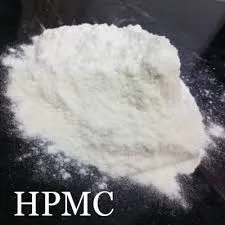
Lis . 24, 2024 22:53 Back to list
Hydroxypropyl Methyl Cellulose Overview and Applications in Various Industries
Understanding Hydroxypropyl Methyl Cellulose Properties, Uses, and Applications
Hydroxypropyl Methyl Cellulose (HPMC) is a cellulose derivative that has gained significant attention in various industries due to its versatile properties. With the Chemical Abstracts Service (CAS) number 9004-65-3, HPMC is widely used as a thickener, emulsifier, and film-forming agent. This article aims to explore its characteristics, benefits, and applications in different fields, particularly in pharmaceuticals, food, and construction.
What is Hydroxypropyl Methyl Cellulose?
Hydroxypropyl Methyl Cellulose is a non-ionic, water-soluble polymer derived from natural cellulose. The modification processes involve the introduction of hydroxypropyl and methyl groups, which enhance the solubility and versatility of the substance in water. This modification not only improves its stability under varying temperatures and pH levels but also allows it to act effectively in both acidic and alkaline environments.
Properties of HPMC
One of the most notable properties of HPMC is its ability to form viscous gels when mixed with water. This unique characteristic makes it an excellent thickening agent in various formulations. Additionally, HPMC is biodegradable and non-toxic, making it a safe choice for applications that require consumer safety and environmental considerations.
HPMC exhibits excellent binding properties, which contribute to its use as a glue or adhesive in various manufacturing processes. The polymer’s film-forming ability allows it to create protective barriers, which not only enhance the stability of products but also improve their appearance. Furthermore, HPMC has a unique ability to control the release of active ingredients, making it invaluable in pharmaceutical formulations.
hydroxypropyl methyl cellulose cas no

Uses of Hydroxypropyl Methyl Cellulose
1. Pharmaceutical Industry HPMC is extensively used in the pharmaceutical industry as a binder and film-coating agent in tablet formulations. Its gel-forming characteristics help to regulate the release of active ingredients, thereby improving the bioavailability and effectiveness of drugs. Moreover, HPMC is an essential component in controlled-release formulations, particularly for medications that require gradual release into the bloodstream.
2. Food Industry In the food sector, HPMC serves as a stabilizer, emulsifier, and thickening agent. It is commonly used in a variety of processed foods, including sauces, dressings, and baked goods. The ability of HPMC to retain moisture makes it an essential ingredient in food formulations, as it helps to enhance texture and shelf-life while reducing the necessity for preservatives.
3. Construction HPMC is also employed in the construction industry, particularly in cement-based products, as a thickening and water-retaining agent. Its addition improves the workability and adhesion of mortars and tile adhesives, enhancing the overall performance of construction materials. HPMC helps to ensure consistency in mixtures, enabling easier application and longer working times.
4. Personal Care Products In cosmetics and personal care products, HPMC serves as a stabilizing agent in creams, lotions, and gels. Its emulsifying properties enhance the texture and stability of products, providing a smooth application and improving the sensory experience for users.
Conclusion
Hydroxypropyl Methyl Cellulose is a versatile and valuable compound with a wide array of applications across various industries. Its properties as a thickener, emulsifier, and film-former make it an essential ingredient in pharmaceutical, food, construction, and personal care products. As the demand for safe, effective, and environmentally friendly materials continues to rise, HPMC stands out as a suitable option that meets these criteria. Whether in improving drug formulations or enhancing the quality of everyday products, HPMC plays a critical role in modern manufacturing and product development. As research continues to explore its potential, we can expect to see even further applications for this remarkable cellulose derivative.
-
Versatile Hpmc Uses in Different Industries
NewsJun.19,2025
-
Redispersible Powder's Role in Enhancing Durability of Construction Products
NewsJun.19,2025
-
Hydroxyethyl Cellulose Applications Driving Green Industrial Processes
NewsJun.19,2025
-
Exploring Different Redispersible Polymer Powder
NewsJun.19,2025
-
Choosing the Right Mortar Bonding Agent
NewsJun.19,2025
-
Applications and Significance of China Hpmc in Modern Industries
NewsJun.19,2025







